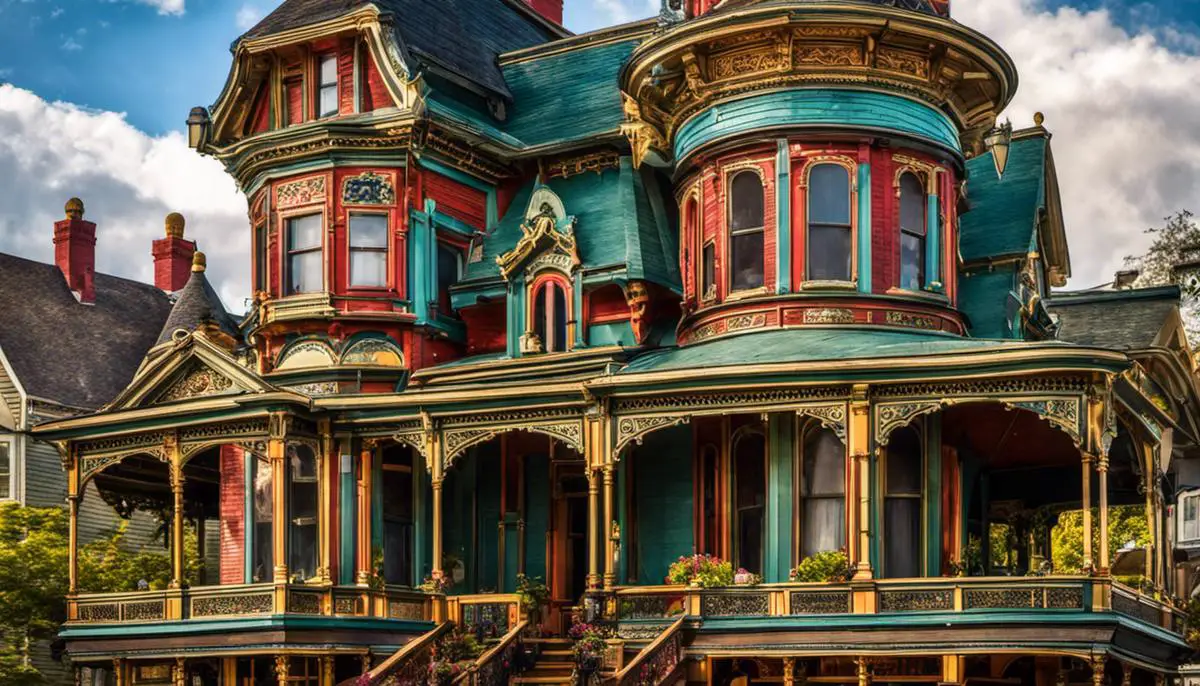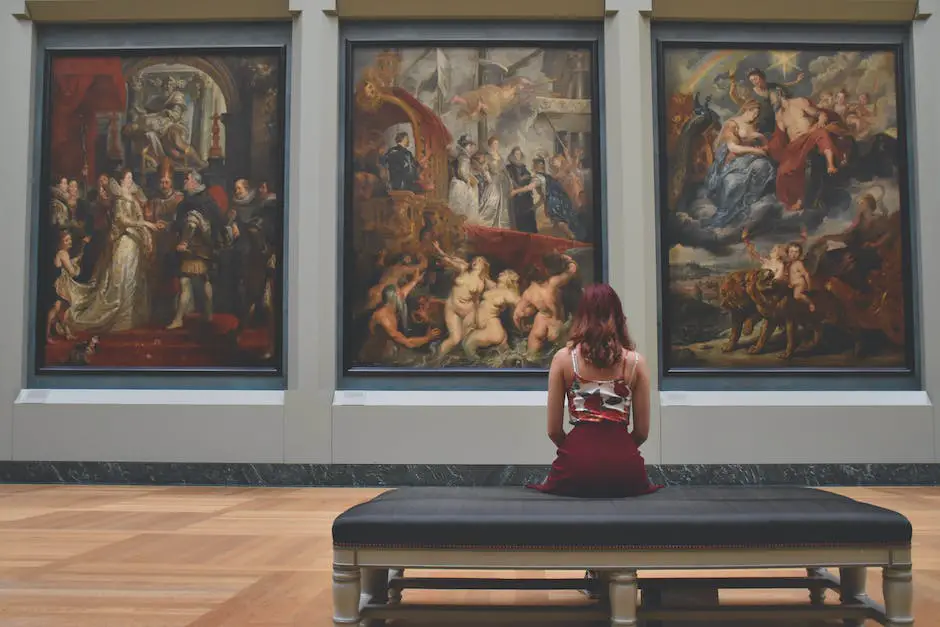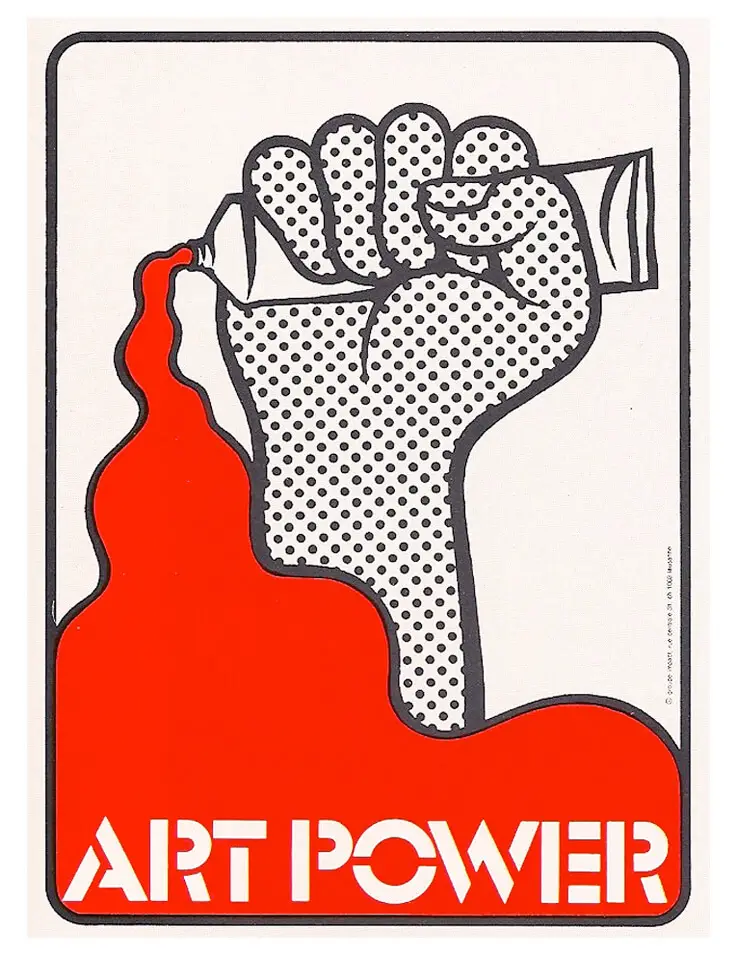Exploring Victorian Era Art: A Visual Journey into the Past

As we journey back to the captivating realm of the Victorian era, our comprehension of its significance often hinges on its diverse and abundant body of art. Despite being under the influence of stringent societal norms and monarchy, art during the Victorian period thrived, being marked by its unique aesthetic, thematic richness, and profound commentary on the era’s socio-political context. From the repercussions of industrialisation to the flowering of romanticism in the atmosphere of strict morality, each artistic manifestation served as the period’s vivid chronicle. The works of noteworthy artists such as John Everett Millais, Dante Gabriel Rossetti, and Edward Burne-Jones provide profound insights into the era’s ethos, not merely as individual pieces of beauty but as mirrors reflecting social, political, and cultural realities.
The Sociopolitical Context of Victorian Art
The Victorian Era Context
The Victorian era, covering Queen Victoria’s reign from 1837-1901, was a period of dramatic change in Britain, marked by an industrial revolution, rapid urbanisation, and the expansion of the British Empire. It signified a tremendous shift in various social, political, and economic aspects and had correspondingly profound effects on the artistic expressions of the time.
Art and Industrialisation
The rise of the industrial revolution during the Victorian era brought distinct changes to the landscape of Britain, as factories and railways replaced the rural idyll. This discharged a profound impact on the art scene, as artists sought to grapple with the effects of industrialisation and urbanisation. There was a new fascination with realism, evident through the artwork of the time, which depicted the contrasts of the industrialised society – the grime, poverty as well as the opportunities and economic prosperity it brought.
Artists also sought to explore the implications of industrialisation on nature. The Pre-Raphaelite Brotherhood, for instance, including artists such as Dante Gabriel Rossetti and John Everett Millais, resisted the mechanised approach of the time and returned to more detailed, vibrant nature scenes, inspired by the early Renaissance era, offering an escapism from the grimy reality of urban scenes.
Monarchy and Victorian Art
The Victorian era is associated with the monarchy and the reign of Queen Victoria herself influenced the art scene significantly. Royal patronage played a significant role in promoting the arts during this time. Queen Victoria and Prince Albert were major patrons and collectors of art, and their endorsement of certain styles or artists could enhance reputations and shape trends. Works of art often depicted the monarchy in grand, idealised scenes, reflecting the societal reverence towards the monarch.
Victorian art also celebrated the British Empire’s growth, often manifested through the depiction of exotic landscapes, architectural grandiosity and diverse cultures. This exploration evoked a sense of national pride and fascination with the exotic and unknown territories.
Art Reflecting Societal Norms and Values
Victorian art is often noted for its moralistic undertone and attention to detail. Narratives drawn from literature, history, and religion were common, each serving as scathing social commentaries or moral lessons. Key societal norms revolving around religion, morality, gender and class hierarchies profoundly influenced the art forms of this era.
For instance, artworks often portrayed women in domestic, virtuous roles conforming to the period’s notion of ‘the angel in the house’. However, as the era progressed and the women’s suffrage movement grew, depictions of women in art began to evolve, paving the way for more modern interpretations in the later years.
Victorian art stands as an intricate reflection of its era, providing insight into the societal complexities of the time. It wasn’t just an evolution of styles and techniques, but an art that responded and engaged with the changing epoch, mirroring the spirit and concerns of the Victorian age.

Characteristics of Victorian Art
Remembered for their detail, sentimentality, and deep symbolism, Victorian artworks carry the indelible imprint of 19th-century British culture. The Victorian era, named for Queen Victoria’s reign from 1837 to 1901, was a period of continuing transformations across the socio-political spectrum. These changes profoundly shaped the artistic aesthetics in various mediums including painting, sculpture, and architecture of the time.
Painting in the Victorian Era
Paintings of the Victorian era are known for their diverse subjects, from scenes of everyday life to dramatic narratives and romanticised depictions of the British Empire. The Pre-Raphaelite Brotherhood, comprising renowned painters such as Dante Gabriel Rossetti and John Everett Millais, rejected industrialisation and sought to return to the detailed and vibrant art of the early Renaissance. Their works are characterised by their richness of colour, intricate designs, and complex compositions, often conveying moral or social messages. Meanwhile, artists like William Powell Frith emerged with pieces that depicted large social scenes, both realistic and idealised, offering a detailed examination of Victorian society.
Sculpture in the Victorian Era
Sculpture in the Victorian age veered from the neoclassical style of the preceding Georgian era to a more realistic and dramatic approach. The works of Sir Francis Chantrey, a leading sculptor of the time, demonstrate the shift in taste with his detailed portrayals of prominent Victorians. The era also marked a revival of Gothic sculpture, intertwined with an increased focus on medieval aesthetics in architecture and design. Many Victorian sculptures were created as public monuments commemorating the lives of influential figures or significant events, serving both as works of art and historical records.
Architecture in the Victorian Era
Victorian architecture was defined by its eclectic style, combining elements from various periods and cultures. The influence of the Gothic Revival was profound, with architects such as Augustus Pugin designing elaborately detailed structures reminiscent of medieval churches. This style can be seen in iconic structures such as the Houses of Parliament. Residential buildings often featured ornate decorations, asymmetrical layouts, and high-pitched roofs.
The use of new materials and structural techniques also emerged in this era. Cast iron, steel, and glass allowed for the creation of large, bright, and open spaces, as seen in the Crystal Palace – an embodiment of Victorian technological prowess and the Industrial Revolution.
The art of the Victorian era, encompassing painting, sculpture, and architecture, is widely appreciated for its intricacy, its capacity for telling dramatic narratives, and its conveyance of significant moral messages. The distinctive elements of this period serve as a mirror to the hopes, worries and aspirations of society during this time, reflecting the multifaceted nature of an increasingly changing Britain. This evolution is strikingly evident, whether it’s in the profound symbolism found in the work of the Pre-Raphaelites, the meticulous accuracy of Victorian era sculptures, or the sumptuous splendour of Gothic Revival architecture. Each medium depicts an aspect of the remarkable fusion of tradition and innovation that hallmarked the Victorian times.

Notable Victorian Artists and their Works
John Everett Millais
John Everett Millais, best known as a key figure behind the formation of the Pre-Raphaelite Brotherhood, was a distinguished painter and illustrator of the Victorian times. Born on English soil back in 1829, Millais demonstrated exceptional artistic prowess from a young age, earning a spot at the Royal Academy School at the tender age of eleven. Some of his most appreciated works include “Ophelia”, a sorrowful figure from Shakespeare’s Hamlet, and “Christ In The House Of His Parents”. These paintings are an exceptional representation of the Pre-Raphaelite ideology, showcasing an obsession for intricate details and intense use of colour. Despite developing a broader and more relaxed technique in his later years, Millais maintained his position as a highly respected portrait artist within his peers.
Dante Gabriel Rossetti
Another luminary of the Pre-Raphaelite Brotherhood, Dante Gabriel Rossetti was noted for his romantic subjects and symbolism in his artworks. Rossetti, besides being a gifted painter, was a respected poet and translator. This passion for literature heavily influenced his artwork which often depicted scenes from Romantic poetry and Medieval history. His famous artworks include “The Awakened Conscience”, “Beata Beatrix”, and “Proserpine”. Rossetti had a bold and distinctive style, often using rich colours and intricate designs that presented a fantastical, dream-like quality. His paintings remain instrumental in defining the opulent visual aesthetics of the Victorian age.
Edward Burne-Jones
Also a pivotal figure of the Pre-Raphaelite movement, Edward Burne-Jones came into limelight during the latter part of the Victorian era. Unlike most artists of his time, Burne-Jones’s art emphasised on the narrative or story. Drawing from classical mythology, Arthurian legend, and the Christian faith, his masterpieces are famous for the mythical dreaming figures and intricate attention to detail. His famous works include “The Star of Bethlehem”, and “The Golden Stairs”. Burne-Jones utilised a limited colour palette and intricate detailing that resulted in richly romantic and evocative compositions, marking him as one of the last major history painters of the Victorian era.
The Victorian era, marked by the remarkable contributions of figures like Millais, Rossetti, and Burne-Jones had an undisputed impact on art history. Their work, although met with a mix of praise and criticism, ushered in a new chapter of artistry reflecting the changing ideologies of their time. Their unique styles and innovative approaches continue to profoundly influence artists today.

Victorian Art and Its Influence on Later Movements
Implications of Victorian Art on Later Movements
The artistry of the Victorian period spanned the early 19th century to the beginning of the 20th and made a profound impact on numerous subsequent art movements due to its narrative-based, detail-driven, and social and moral value reflecting nature. Of significance is the emergence of the Pre-Raphaelite Brotherhood during this time. Their mission to resist the rapidly industrialising society led them back to producing more vibrant and elaborate art.
Victorian Aesthetics in Modern Art
Despite the seemingly diametric reaction from Modernists, the principles of Victorian aesthetics did not vanish altogether post the 19th century. For instance, the Industrial Revolution brought about significant change to the British landscape which artists such as J.M.W. Turner documented extensively. This attention to the changing world can be seen in later movements like Futurism and Cubism.
The ornate detailing in Victorian art influenced the immersive patterns and decorative aesthetics of the Art Nouveau movement. This style carried forward the extravagance of ornamentation typical of the Victorian era. Meanwhile, the Victorian fascination with the exotic and Oriental was mirrored in the Japonisme trend which influenced Impressionists like Claude Monet.
Victorian Art: Rejection and Incorporation
Subsequent movements did reject some aspects of Victorian art. The Aesthetic movement, the Arts & Crafts movement, and the Art Nouveau style began to place emphasis on art for its beauty alone, thus resisting the Victorian notion of art as a medium for delivering moral or social commentary. A shift from detailed narrative paintings towards abstract expressions of emotion represents a key departure from Victorian principles.
Nonetheless, the influence of Victorianism is woven into the fabric of several later developments. Surrealism, for instance, adopted Victorian symbolism and subverted it to convey the uncanny and unsettling. Even in aspects austerely rejected by Modernists, such as sentimentality and narrative depiction, the impact of Victorianism persists. This thread can be seen in contemporary illustration and graphic novels, thereby adding varied layers to the rich tapestry of art history.
The Lasting Influence of Victorian Art
Victorian art has profoundly shaped the evolution and understanding of both traditional and contemporary art. Its notable impact can be seen in the way its principles and aesthetics have been either overtly dismissed or subtly woven into diverse facets of artistic expression. This examination of the Victorian era offers insight into the cyclical progression and transformative nature of art, serving as an ongoing conversation between different periods and movements.

The Reception and Legacy of Victorian Art
Victorian Art’s Role in Today’s Artistic Landscape
In the modern lens, Victorian art is principally recognised as a pivotal point in art history, bridging the gap between the traditional and the modern, blending romantic influences while anticipating the advent of modernism. It stands as a monumental symbol of style and substance that reflect the focus on aesthetics and the emerging middle class of that time. Significant artistic movements birthed in this era, such as the Pre-Raphaelite Brotherhood, continue to echo in today’s art world with their idealised, often nature-inspired, subjects being viewed as iconic representations.
Commemorations and Exhibitions of Victorian Art
Victorian art continues to enjoy consistent attention and recognition. Exhibition spaces worldwide consistently feature Victorian artists’ works. Notably, London’s Tate Britain, home to the national collection of British art, regularly showcases an extensive collection of Victorian art. Other significant spaces include the Victoria and Albert Museum and the Guildhall Art Gallery in London, as well as The Walker Art Gallery in Liverpool, all housing notable Victorian art collections and often creating exhibitions around them.
Market Value of Victorian Art
In the art market, Victorian paintings consistently fetch substantial prices, particularly works by notable artists such as John Atkinson Grimshaw or John Everett Millais. The latter sees his artwork, “Ophelia,” often regarded as one of the most expensive British paintings ever sold. The buying and selling of Victorian art play a significant role in the contemporary art market, maintaining a healthy demand due to the artists’ mastery and the artworks’ historical value.
Influence of Victorian Art on Contemporary Artists
Victorian art influences contemporary artists in various ways. Intricate detailing, emphasis on mood and emotion, and incorporation of nature are facets of Victorian art frequently replicated today. Artists are often inspired by its blend of realism and emotive interpretation, finding a parallel in the modern art world’s diverse styles.
Moreover, the social commentary inherent in much of Victorian Art influences contemporary artists. For instance, the social realism movement during the Victorian era, which addressed disparities in wealth and highlighted societal issues, inspires modern artists who utilise their work as a social platform.
Appreciation and Criticism of Victorian Art
Critics and admirers of Victorian art acknowledge its tendency towards nostalgic romanticizing while others appreciate its evocation of unease and melancholy. There is an established admiration for the magnificence and spectacles it portrays, the contrasts of light and dark, the overwhelming grandeur. However, it also retains its share of critique, with critics pointing to its often overly sentimentalized depictions of life and its sidestepping of the harsh realities of Victorian times.
Lasting Legacy of Victorian Art
Ultimately, the lasting legacy of Victorian art continues to permeate the contemporary art scene, through its influence on modern artists, its sustained prominence in exhibitions and collections, and the high market demand for its works. Despite differing perspectives on its stylistic approach and content, it remains an integral part of art history, serving as a critical transition point that shaped the development of modern art.

Delving into the realm of Victoria’s royal courts, gas-lit streets, and poignant narratives frozen in the canvas allows us to appreciate how this epoch has moulded the landscape of modern art. While Victorian art occupies a remarkable place in history itself, its fascinating legacy continues to be apparent in contemporary art, making the era a timeless beacon of artistic brilliance. The profound impact of this era on subsequent movements and its enduring influence on the art market and contemporary artists is a testament to its validity in our socio-cultural narrative. Therefore, Victorian art, embedded within the fabric of time, remains more than just a series of vintage masterpieces – it’s a formative thread in the grand tapestry of art history, linking our present insights with an illustrious past.








